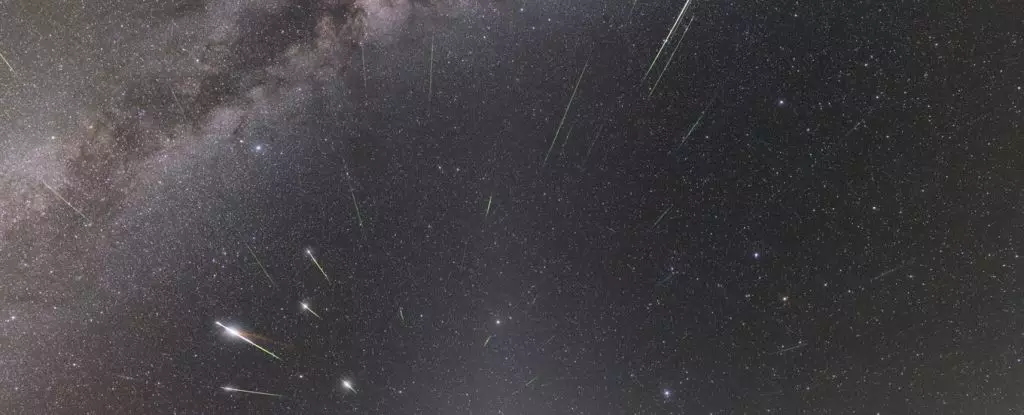As spring sweeps across our landscapes, nature is not the only spectacle to behold; the night sky is preparing to put on one of its finest shows—the Eta Aquariid meteor shower. Peaking from May 5 to 6, this celestial event invites stargazers to step outside, find a cozy vantage point, and witness the breathtaking display of meteors that burn up in Earth’s atmosphere. However, the allure of shooting stars isn’t just about capturing fleeting beauty; it’s an experience that connects us to the universe and reminds us of the rhythm of life beyond our planet.
For enthusiasts hoping to maximize their meteor-watching experience, preparation is key. A clear view of the sky, comfortable seating, and a warm blanket can transform an ordinary night into a cosmic adventure. The time around dawn is typically the most fruitful, as that’s when the radiant of the meteors—originating near the constellation Aquarius—climbs the heavens. While the anticipation builds, the joy of witnessing these streaking fiery trails promises a moment of pure wonder.
The Source of Meteors: Cometary Heritage
So, what causes these delightful meteor showers? At the heart of it lies the remnants of a celestial traveler: comet 1P/Halley or Halley’s Comet, which graces our solar system every 76 years. As Earth orbits the Sun, it invariably intersects the primordial dust and debris left behind by this ancient comet. When these fragments—even as small as grains of sand—enter our atmosphere at astonishing speeds, the friction ignites them, giving rise to the beautiful streaks of light that mesmerize us.
The Eta Aquariids allow us to contemplate both the fragility and resilience of our celestial neighborhood. Each meteor we see is like a whispered message from the past, a fragment of the cosmos that has traveled eons only to meet a fiery end in our atmosphere. And, while we may view the trees swaying or hear the sounds of nocturnal life around us, knowing that these meteors are remnants of Halley’s Comet brings a deeper meaning to the experience.
Where to Catch the Best View
While the southern hemisphere will experience a remarkable show, with predictions of 50 to 60 meteors per hour, observers in the northern hemisphere should not lose hope. With a bit of luck, you could still see up to 30 meteors per hour, particularly during the hours leading up to dawn. Despite the limitations of geographic location, stargazing is a universally enriching experience that transcends borders.
Timing and location play a significant role in maximizing visibility. The moon, at a striking 64 percent full during the peak, will not hinder the viewing experience, as it will have set before the radiant rises. However, this isn’t a reason to delay your plans; the meteor shower extends through late May. Therefore, even if you miss the peak, the days leading up to May 28 will continue to deliver sporadic meteors, allowing for more opportunities to witness celestial magic.
Encouraging Astronomy Enthusiasm
The Eta Aquariids are more than just a visual feast—they epitomize the human spirit of exploration and curiosity about the cosmos. Obsessed with the idea of connecting with the universe, many astrology enthusiasts and casual sky-watchers alike are drawn to such events as they spark conversations, creativity, and a shared sense of wonder.
For those keen on planning their astronomical pursuits, the International Meteor Organization also offers a calendar that outlines meteor showers throughout the year. This is a valuable resource for anyone invested in the art of stargazing, turning casual bathroom breaks into potential cosmic encounters right from their backyard.
Ultimately, the Eta Aquariid meteor shower is a stellar reminder that we are part of something much grander than ourselves—a cosmic dance that continues regardless of our daily worries and stresses. As you prepare for this year’s shower, consider this: each shooting star is a testament to the beautiful chaos of the universe, and all we need to do is to look up and embrace the wonder.

